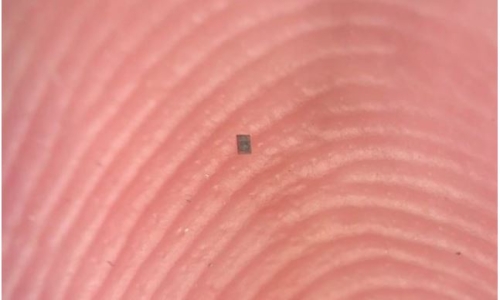


 11:24:8
11:24:8  2024-11-12
2024-11-12  886
886

For a long time it was assumed that somewhere between 5 and 6% of children have attention-deficit hyperactivity disorder (ADHD). But the rates, in practice, are often higher. The American Centers for Disease Control and Prevention put the prevalence at 11.4% in children in 2022.
The Swedish Board of Health and Welfare reports that in 2022 10.5% of boys and 6% of girls received an ADHD diagnosis, which is 50%% more than in 2019. And the board forecast that the rates will eventually plateau at 15% for boys and 11% for girls.
So, what might be the reasons behind the startling rise? Here are eight possible causes, many of which overlap and interact with each other.
1. Multiple diagnoses made in the same person
Previously, doctors were recommended by diagnostic manuals and trained to limit diagnoses in an individual to the most prominent one, and not to make certain combinations of diagnoses at all – for example, autism and ADHD. Today, it is recommended and common practice in the mental health sector to make as many diagnoses needed to meaningfully describe and cover the symptoms and challenges of a person.
2. Increased knowledge and awareness by professionals
Today, there is a new generation of professionals working in services with higher awareness and knowledge of ADHD. This has led to earlier detection and to ADHD being diagnosed in groups that were previously neglected, particularly girls and women - but also in adults, generally.
3. Reduced stigma
In many societies, ADHD is far less stigmatized than previously. Doctors have fewer doubts about making the diagnosis, and those receiving it feel less stigmatised. For more and more people, ADHD has fewer negative connotations and is becoming a natural part of people's identities .
4. Modern society places higher demands on cognitive skills
ADHD is not a disease but a malfunctioning composition of cognitive traits that exist on more functional levels even in the general population, such as "attention control" (Concentration) and organizational and self-regulation skills.
Modern societies are fast and complex, placing high demands on these cognitive traits. So people with lower than average skills in these key cognitive areas begin struggling to cope with everyday demands and might receive an ADHD diagnosis.
5. Higher expectations on health and performance
People's expectations of their own and others' performance and health are rising. The so-called "social baseline" of average health and performance is higher today.
Therefore, people may express concerns about their own and others' functioning earlier and more often, and may presume that ADHD could be an explanation.
6. Changes in schools have led to more students struggling
Schools have gone through substantial changes in how they teach, such as digitisation and introducing more project- and group-based learning, as well as much more self-guided education.
These changes have led to a less clear learning environment, including increased demands on students' motivation and their cognitive skills, factors that can make it harder for students with even just a few traits of ADHD to succeed. It has also caused schools to refer more students whom they suspect of having ADHD for assessment.
7. Policymakers prioritise assessment
Politicians in many countries have tried to address the rising diagnosis rates predominantly by making diagnostic assessments more accessible so that people don't have to wait a long time to receive a diagnosis.
While this is understandable, it fuels the number of diagnoses made and does not focus on avoiding diagnoses, such as by improving how children are taught, improving workplaces to make them more neurodivergent friendly, and offering support without requiring that a person have a diagnosis.
8. Diagnosis guarantees access to support and resources
In most societies, services are constructed as such that only a clinical diagnosis guarantees access to support and resources. It is often the only way for people and their families to get support.
Generally, not a lot is done for people without a diagnosis as service providers do not get reimbursed and are therefore less obliged to take action. So people in need of support are more likely to actively seek a diagnosis. And professionals are more inclined to assist them by giving a diagnosis, even if the person doesn't quite meet the diagnostic criteria for ADHD – a phenomenon called "diagnostic upgrading ".
Reality Of Islam |
|

A tiny robo

By applying

Stanford, C

A new study
 9:3:43
9:3:43
 2018-11-05
2018-11-05
10 benefits of Marriage in Islam
 7:5:22
7:5:22
 2019-04-08
2019-04-08
benefits of reciting surat yunus, hud &
 9:45:7
9:45:7
 2018-12-24
2018-12-24
advantages & disadvantages of divorce
 11:35:12
11:35:12
 2018-06-10
2018-06-10
 6:0:51
6:0:51
 2018-10-16
2018-10-16
 2:33:4
2:33:4
 2023-02-15
2023-02-15
 1:38:41
1:38:41
 2021-12-08
2021-12-08
 10:43:56
10:43:56
 2022-06-22
2022-06-22
 4:2:19
4:2:19
 2022-10-10
2022-10-10
 2:2:13
2:2:13
 2022-10-08
2022-10-08
 8:19:41
8:19:41
 2018-06-21
2018-06-21
 9:50:37
9:50:37
 2023-02-28
2023-02-28
 5:41:46
5:41:46
 2023-03-18
2023-03-18
| LATEST |